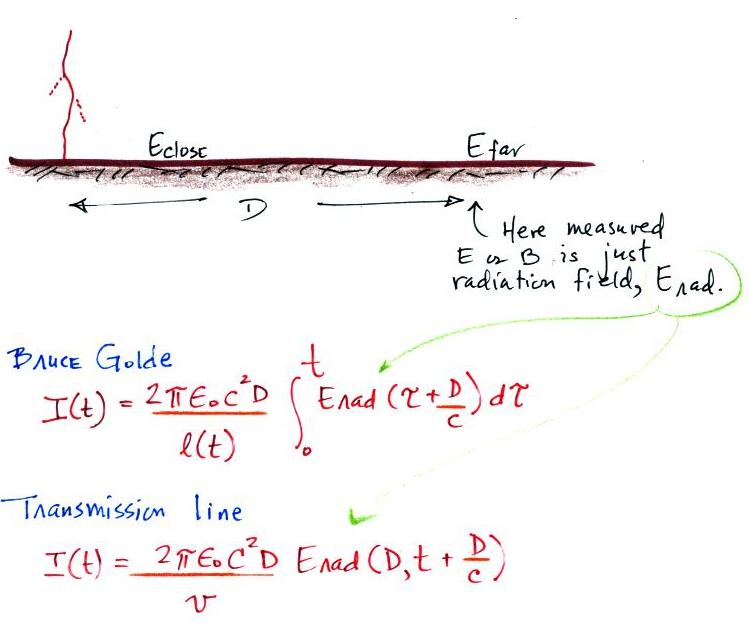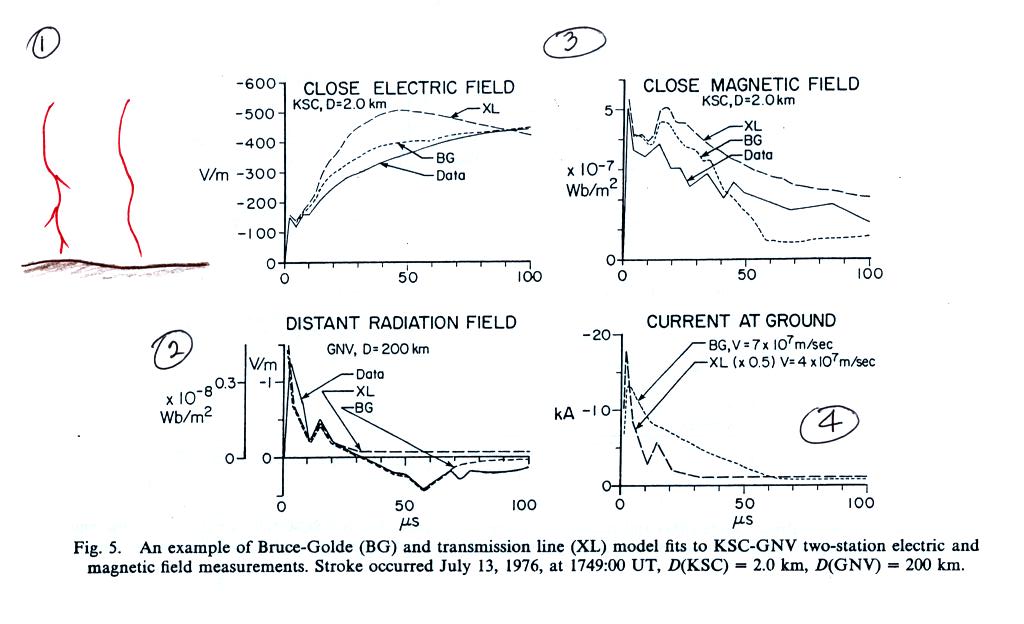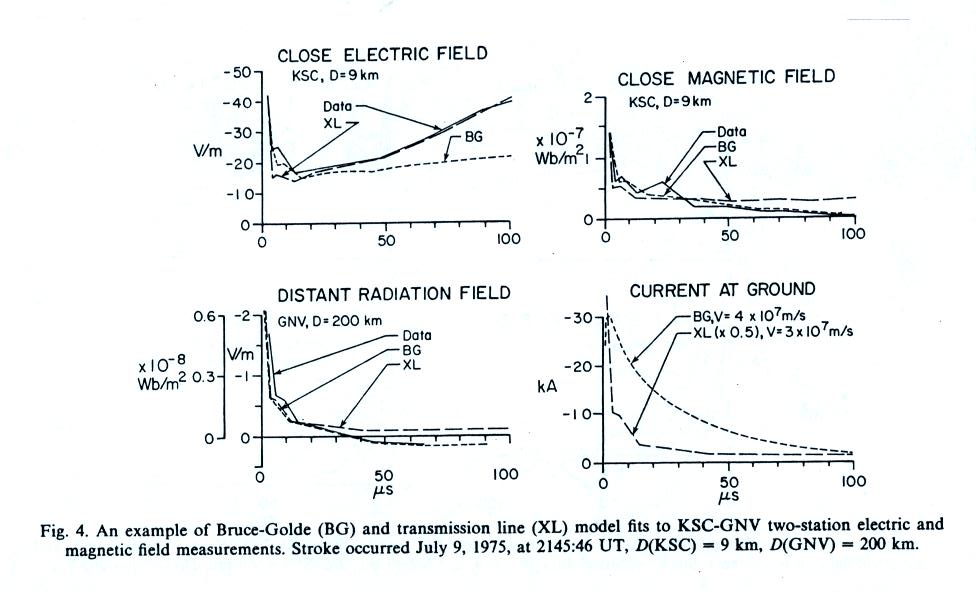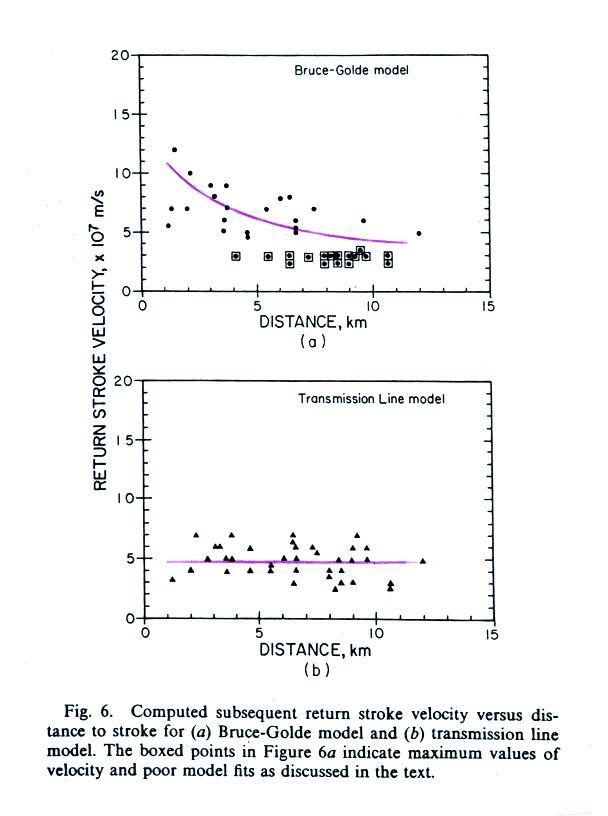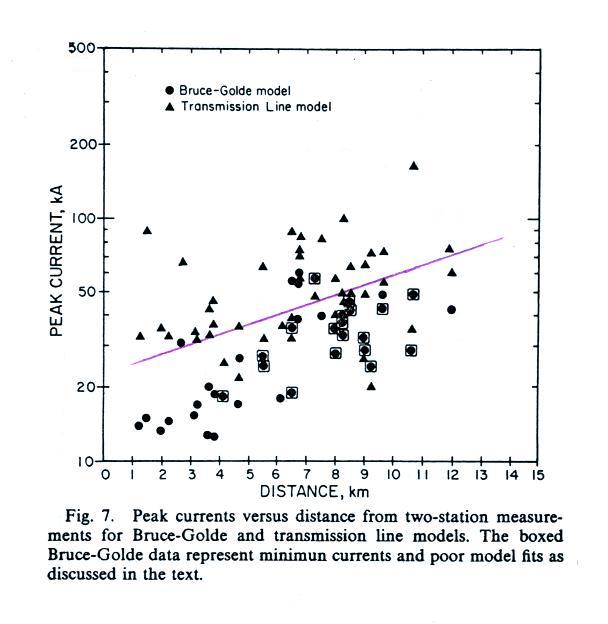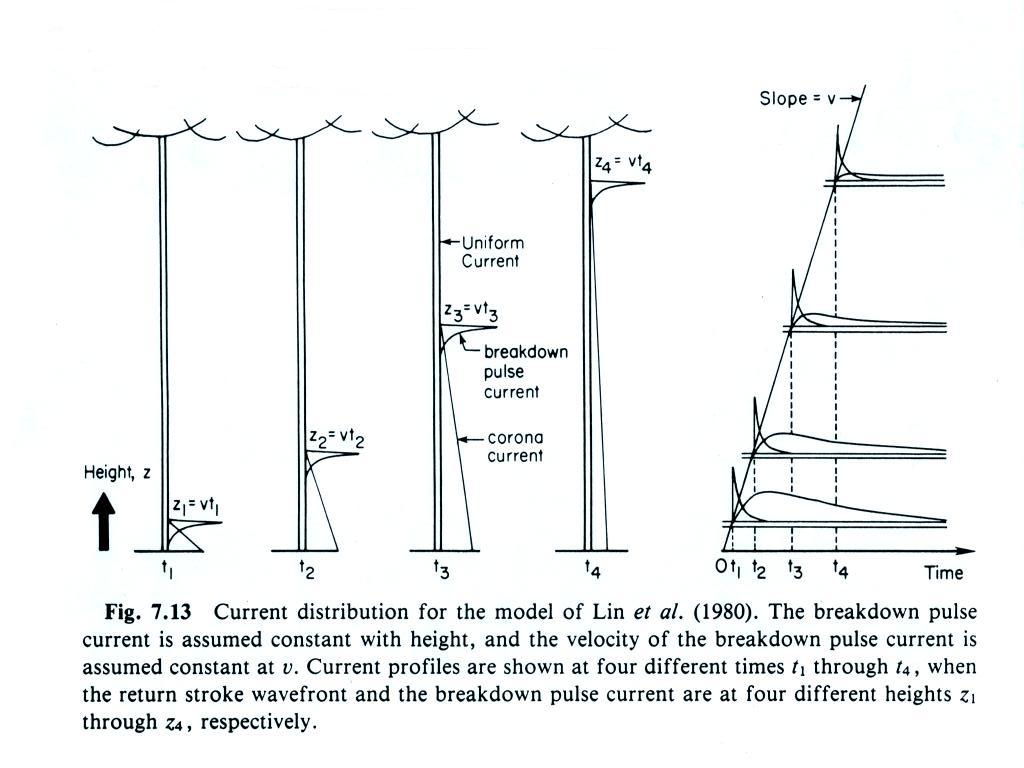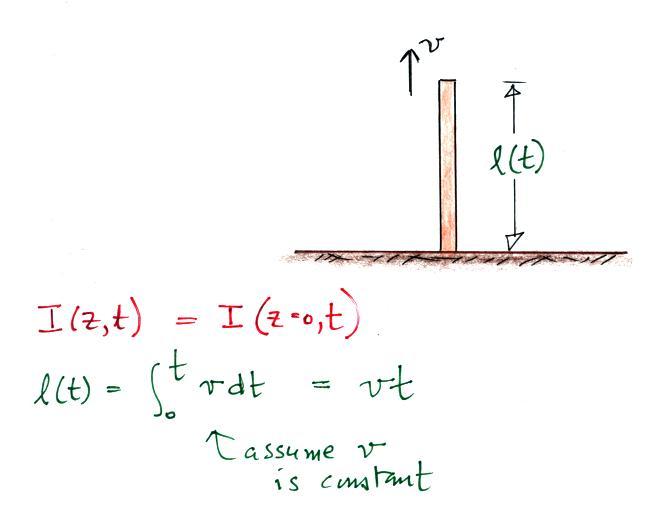

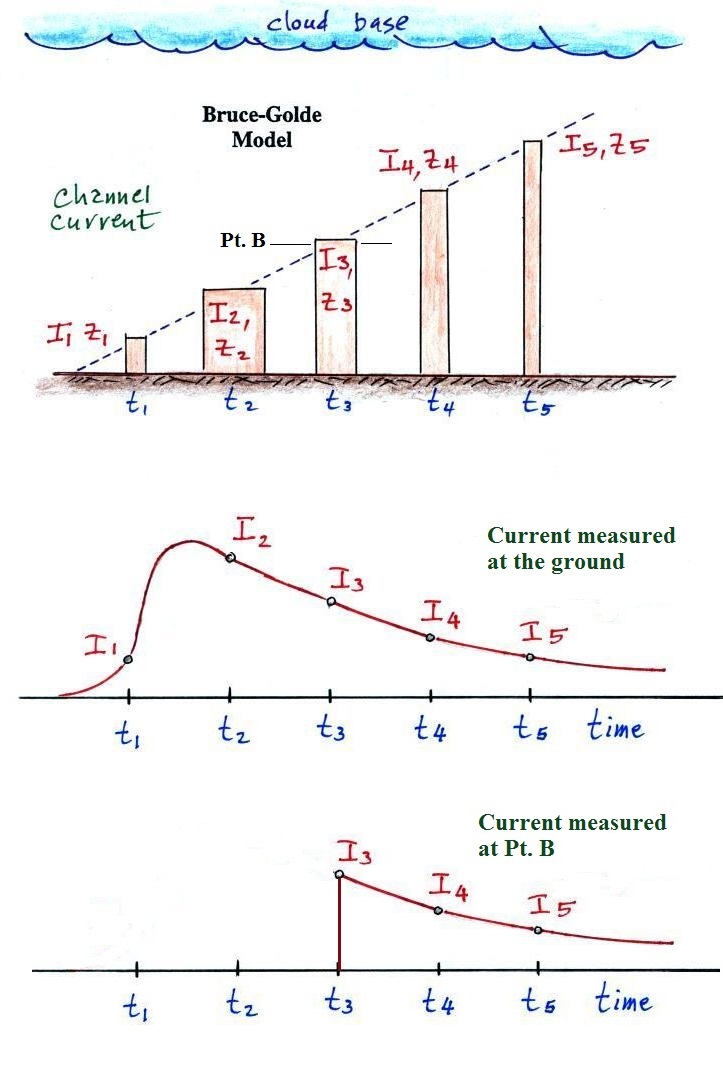
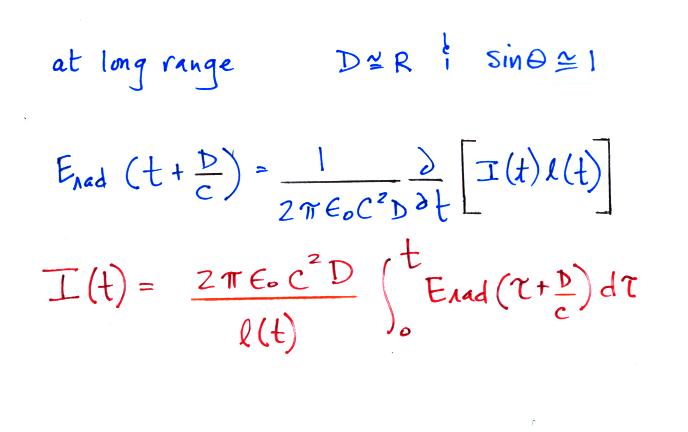

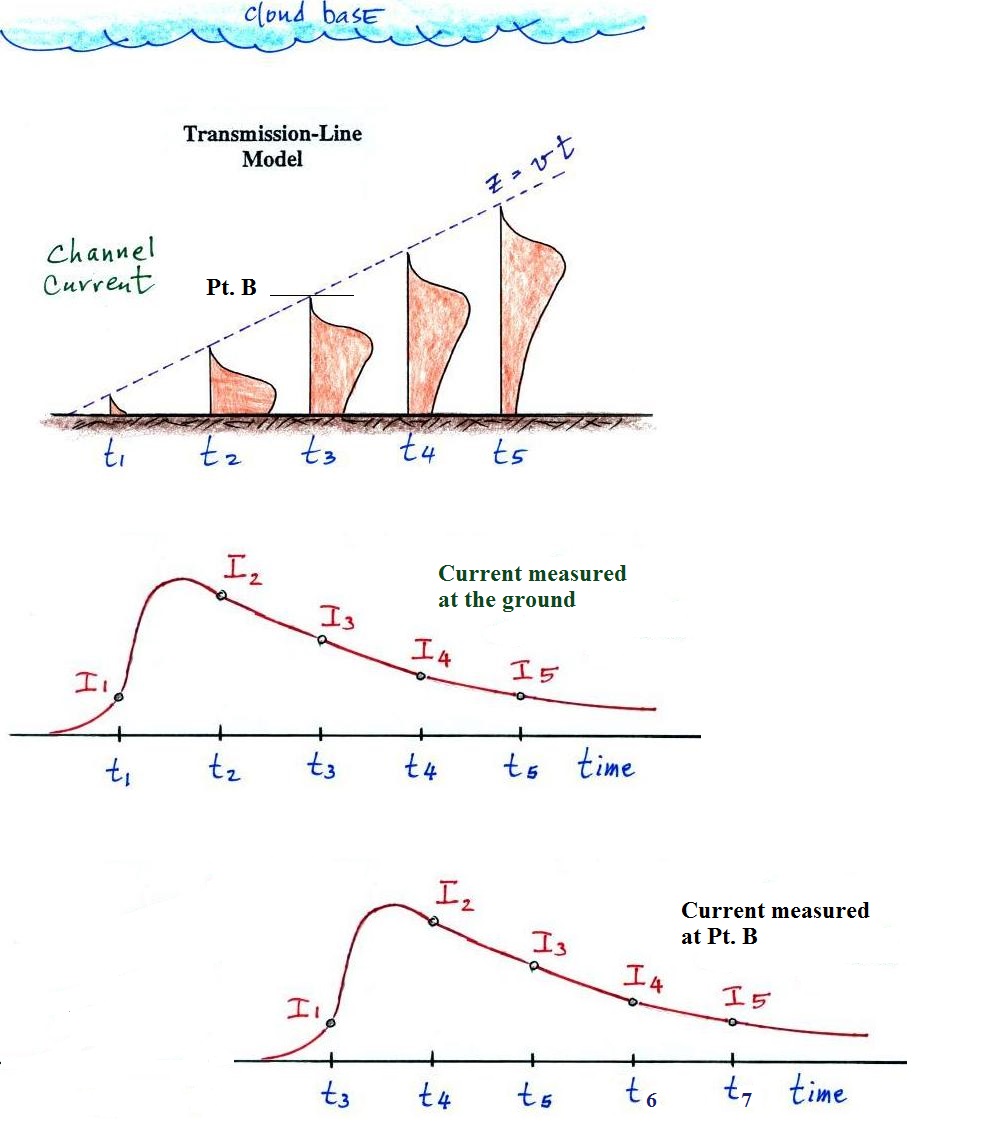
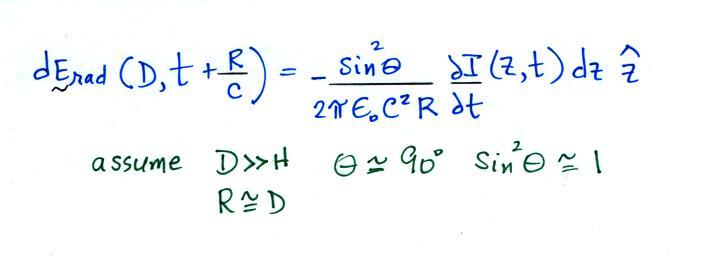
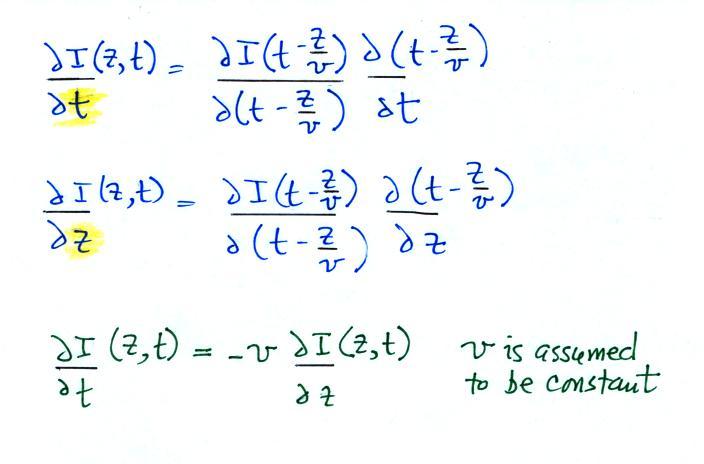
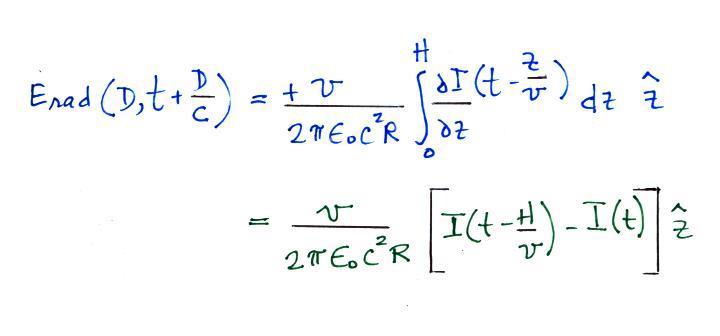
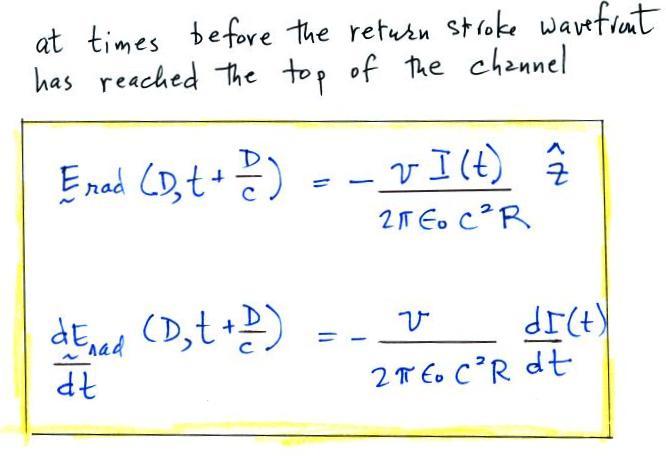
Erad has the same shape as the current waveform measured at the ground. Ditto for dErad/dt and dI/dt.
These expressions are widely used to estimate Ipeak and peak values of dI/dt from measured Erad and dErad/dt.
Note both the peak I and peak dI/dt occur when the tip of the upward moving return stroke current waveform is close to the ground. This assumption that the return stroke channel is straight and vertical might not be too bad at this point. The assumption that sin θ = 1 is also not too bad.
